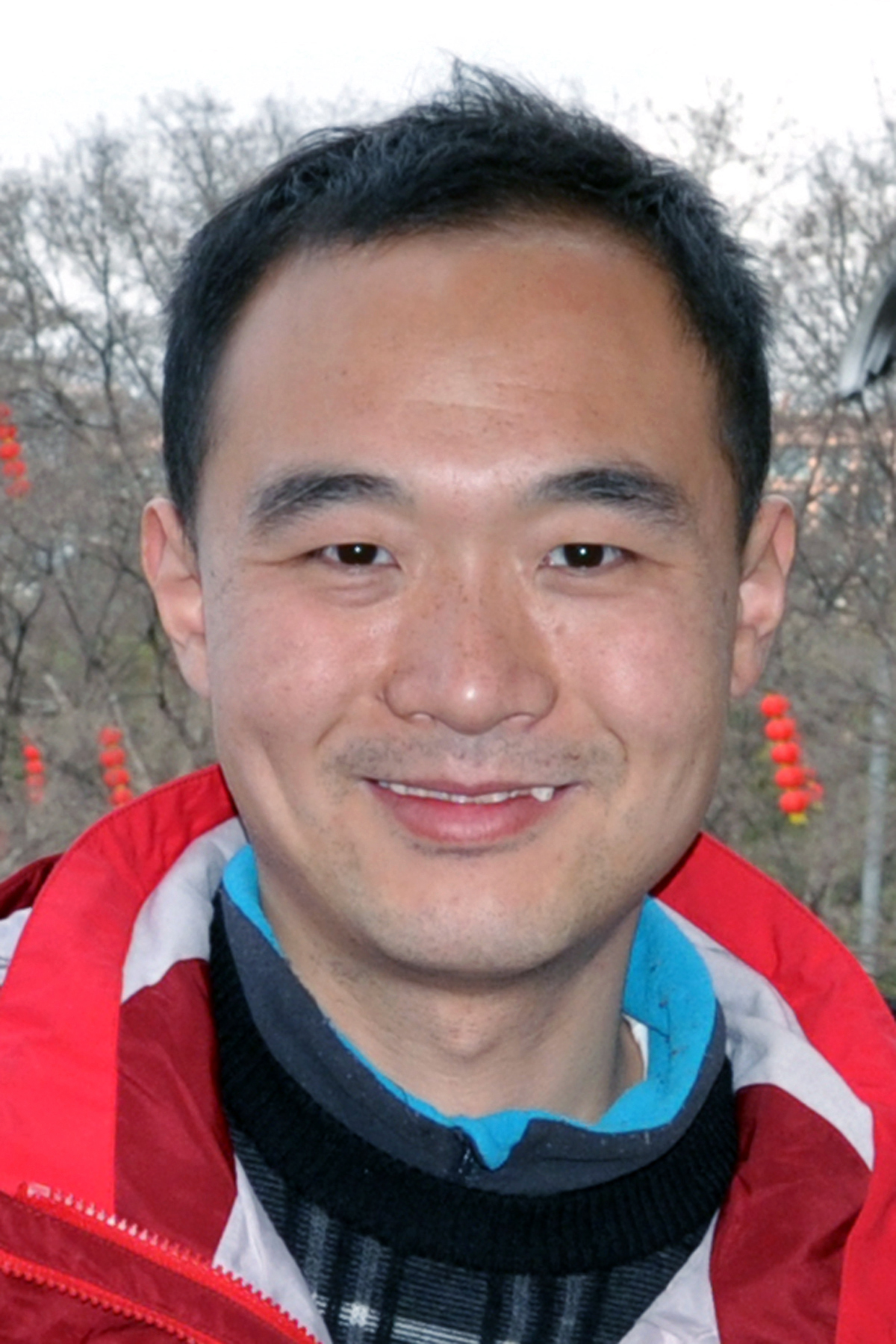


EMPLOYMENT:
2021– Professor. Nanjing Institute of Geology and Palaeontology, Chinese Academy of Sciences.
2015–2021 Associate Professor. Nanjing Institute of Geology and Palaeontology, Chinese Academy of Sciences.
2011–2015 Research Associate. Nanjing Institute of Geology and Palaeontology, Chinese Academy of Sciences.
EDUCATION AND PROFESSIONAL EXPERIENCE:
2014–2015 Associate Research Scientist, School of Forestry and Environmental Studies, Yale University, New Haven, U.S.A.
2013–2014 Postdoctoral Fellow, School of Forestry and Environmental Studies, Yale University, New Haven, U.S.A.
2007–2011 Ph.D. in Paleontology & Stratigraphy, Nanjing Institute of Geology and Palaeontology, Chinese Academy of Sciences, Nanjing, P.R. China. Thesis Topic: Fossil Plants from the Oligocene Ningming Formation of Guangxi and a Preliminary Palaeoclimatic Reconstruction of the Flora.
2004–2007 M.Sc. in Paleontology & Stratigraphy, Nanjing Institute of Geology and Palaeontology, Chinese Academy of Sciences, Nanjing, P.R. China. Thesis Topic: Angiospermous Fruits and Seeds from a Holocene Flora in Qingdao.
2000–2004 B.Sc. in Biological Sciences, School of Life Science, Nanjing University, Nanjing, P.R. China.
PROFESSIONAL RECOGNITION:
2023 One Hundred Excellent Articles of Natural Science in Jiangsu Province
2022 20th International Award in Palaeontological Research.
2022 International Partnership Award for Young Scientists of Chinese Academy of Sciences
2022 China’s Top 10 Advances in Paleontology for 2021.
2021 Excellent Member of the Youth Innovation Promotion Association, Chinese Academy of Sciences.
2016 Excellent Youth of the Nanjing Institute of Geology and Palaeontology, Chinese Academy of Sciences.
Systematic Paleobotany;
Plant Macroevolution in Deep Time;
Origin and Early Diversification of Angiosperms;
Mesozoic Coal-Forming Plants;
Origin and Evolution of Modern Plant Diversity in East Asia
Shi G.*, Herrera F., Herendeen P.S., Clark E.G., Crane P.R., 2021. Mesozoic cupules and the origin of the angiosperm second integument. Nature 594, 223–226.
Wang B.*, Shi G.*, Xu C., Spicer R.A., Perrichot V., Schmidt A.R., Feldberg K., Heinrichs J., Chény C., Pang H., Liu X., Gao T., Wang Z., Ślipiński A., Solórzano-Kraemer M.M., Heads S.W., Thomas J.M., Sadowski E., Szwedo J., Azar D., Nel A., Liu Y., Chen J., Zhang Q., Zhang Q., Luo C., Yu T., Zheng D., Zhang H., Engel M.S., 2021. The mid-Miocene Zhangpu biota reveals an outstandingly rich rainforest biome in East Asia. Science Advances 7, eabg0625.
Dong C., Shi G.*, Herrera F., Wang Y., Herendeen P.S., Crane P.R., 2020. Middle–Late Jurassic fossils from northeastern China reveal morphological stasis in the catkin-yew. National Science Review 7, 1765–1767.
Shi G.*, Friis E.M., Pedersen K.R, Crane P.R., 2024. A new Harrisiothecium pollen organ from the Upper Triassic of South Central China. Review of Palaeobotany and Palynology 323, 105079.
Wu X., Shu J., Yin S., Sadowski E.-M., Shi G.*, 2024. Parrotia flower blooming in Miocene rainforest. Journal of Systematics and Evolution 62, 449-456.
Shi G*., 2023. Evolution of the angiosperms and hydrologic cycle. Chinese Science Bulletin 68, 1487–1500.
Shi G.*, Herrera F., Herendeen P.S., Clark E.G., Crane P.R., 2022. Silicified cupulate seed-bearing structures from the Early Cretaceous of eastern Inner Mongolia, China: rethinking the corystosperm concept. Journal of Systematic Palaeontology 20, 2133644.
Herrera F.*, Testo W.L., Field A.R, Clark E.G., Herendeen P.S, Crane P.R., Shi G., 2022. A permineralized Early Cretaceous lycopsid from China and the evolution of crown clubmosses. New Phytologist 233, 2310–2322.
Song B.*, Spicer R.A., Zhang K.*, Ji J., Farnsworth A., Hughes A.C., Yang Y., Han F., Xu Y., Spicer T., Shen T., Lunt D.J., Shi G.*, 2020. Qaidam Basin leaf fossils show northeastern Tibet was high, wet and cool in the early Oligocene. Earth and Planetary Science Letters 537, 116175.
Shi G.*, Crane P.R., Herendeen P.S., Ichinnorov N., Takahashi M., Herrera F., 2019. Diversity and homologies of corystosperm seed-bearing structures from the Early Cretaceous of Mongolia. Journal of Systematic Palaeontology 17, 997–1029.
Shi G.*, Herrera F., Herendeen P.S., Leslie A.B., Ichinnorov N., Takahashi M., Crane P.R., 2018. Leaves of Podozamites and Pseudotorellia from the Early Cretaceous of Mongolia: stomatal patterns and implications for relationships. Journal of Systematic Palaeontology 16, 111–137.
Herrera F., Shi G., Ichinnorov N., Takahashi M., Bugdaeva E., Herendeen P.S., Crane P.R.*, 2017. The presumed ginkgophyte Umaltolepis has seed-bearing structures resembling those of Peltaspermales and Umkomasiales. PNAS 114, E2385–E2391.
Shi G.*, Leslie A.B., Herendeen P.S., Herrera F., Ichinnorov N., Takahashi M., Knopf P., Crane P.R., 2016. Early Cretaceous Umkomasia from Mongolia: Implication for homology of corystosperm cupules. New Phytologist 210, 1418–1429.
Shi G.*, Leslie A.B., Herendeen P.S., Ichinnorov N., Takahashi M., Knopf P., Crane P.R., 2014. Whole-plant reconstruction and phylogenetic relationship of Elatides zhoui sp. nov. (Cupressaceae) from the Early Cretaceous of Mongolia. International Journal of Plant Sciences 175, 911–930.
Shi G., Zhou Z.*, Xie Z., 2012. A new Oligocene Calocedrus from South China and its implications for transpacific floristic exchanges. American Journal of Botany 99, 108–120.